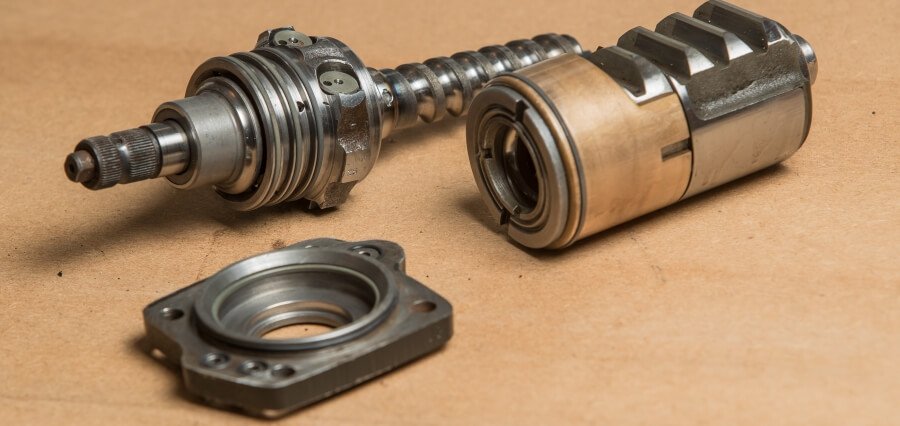In the competitive world of manufacturing, machine uptime translates directly into profitability. To achieve peak performance, every component must function optimally, including the often-overlooked spindle. This critical element drives many machine centers, and its health directly impacts your productivity and bottom line.
On the other hand, a malfunctioning spindle compromises productivity and can lead to complete equipment failure. The result? Costly delays missed deadlines, and even losses. That is why proactive monitoring and maintenance are essential to minimize downtime and control repair costs.
This guide will give a fundamental overview of spindle health. You’ll learn how to preserve your spindles’ lifespan and understand the key steps for effective repair when needed. Let’s dig in!
Understanding Spindle Repair
The spindle is the heart of many types of machinery, particularly in sectors involving milling, turning, and grinding. It is important because it holds the tool that does all the cutting operations. This precision component ensures your equipment produces parts with pinpoint accuracy.
However, regular use can cause the tool to wear down over time. This leads to process inaccuracies and potential breakdowns, ultimately impacting your production efficiency and bottom line.
That’s where the spindle repair service comes in. This specialized service involves a thorough examination of your component. Technicians diagnose issues like misalignment, wear, or vibration and restore them to their original condition or better through the repair process.
In essence, by prioritizing its repair, facilities can maintain the accuracy and reliability of their machinery.
Warning Signs Your Spindle Needs Attention
1.Increased Vibration
Excessive vibration during operation is a clear indicator of an imbalanced spindle or worn bearings. This can make your final product look bad and not the right size.
2.Reduced Accuracy
When the parts you make aren’t the right size, it could mean they aren’t lined up properly. This can result in variations in the final product’s dimensions or surface finish. Fixing these mistakes takes more time and can slow down your production capacity.
3.Abnormal Sounds
Unusual noises like grinding, squealing, or chattering can signify bearing wear, misalignment, or other internal issues. Ignoring these sounds can lead to more extensive damage later.
4.Power Loss or Fluctuations
If your equipment experiences sudden power drops or inconsistencies during operation, it could be due to motor problems. This can disrupt production workflows and potentially damage other machine components.
The Process of Spindle Repair
The component repair is a meticulous process that requires expertise and precision. It typically involves several key steps: assessment, disassembly, cleaning, repair or replacement of damaged parts, reassembly, and testing. Here’s a breakdown of the key steps, explained simply:
- Check-Up Time: First, the repair experts become detectives. They use fancy tools to listen for unusual noises and check for any wobbles.
- Taking it Apart: Next, it is time to examine what is going on inside. The technicians carefully remove the machine’s core to determine what needs fixing.
- Cleaning House: The experts clean the disassembled parts well. This removes any dust or debris that might cause problems.
- Fixing What’s Broken: Now, it’s time for the real work. The professionals replace any worn-out parts. If something cannot be fixed, they will install a brand-new part.
- Putting it Back Together: Once everything is clean and fixed, it is time to rebuild the equipment’s core. The experts carefully put all the pieces back together exactly as they were.
- The Final Test Drive: The last step is checking your equipment after complete repair. The experts test the machine to ensure the fixed spindle is working perfectly and the equipment is running smoothly again.
Benefits of Regular Maintenance
Investing in regular maintenance offers multiple advantages:
1.Extended Equipment Lifespan
Regular maintenance helps machines last longer. This means they won’t break down too soon. Also, it ensures that the machine keeps working properly for a longer time.
2.Enhanced Performance and Efficiency
A well-maintained tool operates at peak efficiency, contributing to faster production times and higher-quality outputs. So, by looking after the gear, everything works smoother, and the stuff you make is even better.
3.Cost Savings & Safety
Regular repair saves you money in the long run by preventing costly breakdowns. Plus, a healthy machinery tool translates to safer operation, reducing the risk of accidents for your team. It’s a win-win for both your wallet and your workforce.
The Final Thoughts
Effective spindle repair and maintenance are not merely about fixing a machine part but about strategically enhancing the performance and longevity of your machinery. Remember, the key to maximizing machine performance lies in the excellence of spindle repairs—a true pivot toward operational success.


